|
Cummins
Engine Company in World War Two
Columbus, IN
1919-Present
This page updated 11-3-2020.
Cummins Engine Company was
founded in 1919 by Clessie Cummins in Columbus, IN to produce diesel
engines. This makes Cummins one of the earliest, if not the earliest,
companies to start working on diesels in the United States. Today,
Cummins is a major producer of diesel engines. It is, and has been, the
largest employer in the Columbus, IN area.
The Army-Navy "E" Award:

Cummins Engine Company was awarded the Army-Navy "E" Award three times.
The first award was presented on 1-28-1943. Mr. C.L. Cummins
accepted the award.
The second award was announced on 3-10-1944.
The third and last award was announced on 7-17-1945.
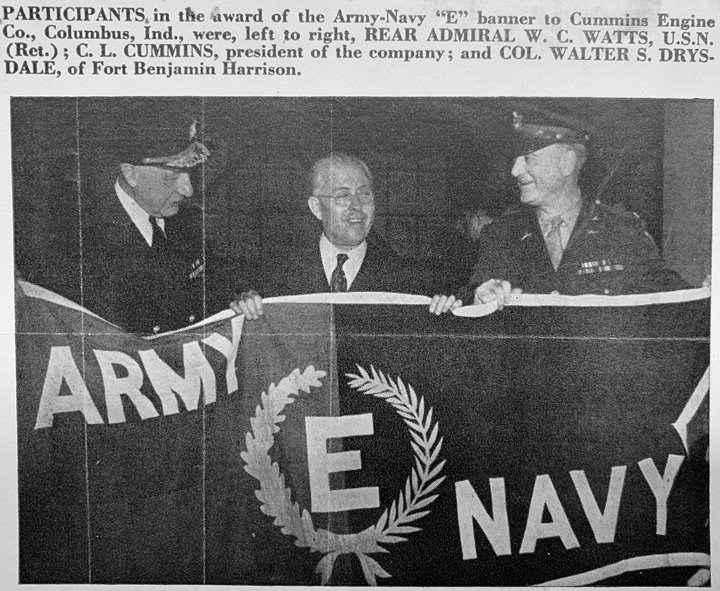
Mr. C.L. Cummins receives the first "E" flag
on 1-28-1943. Photo courtesy of Cummins Inc.
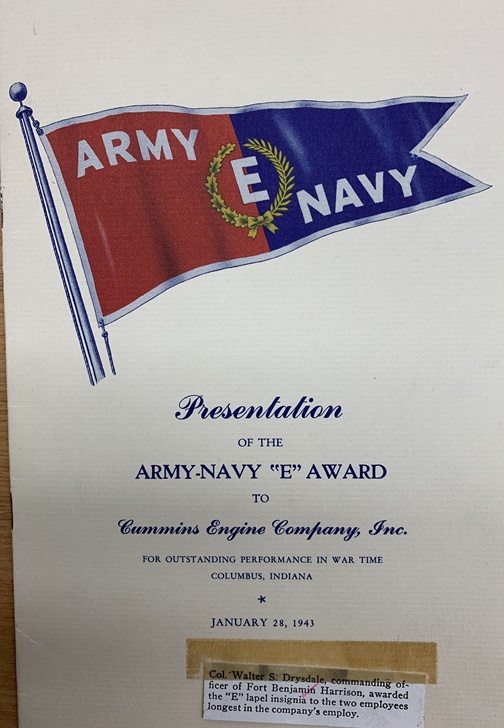
All of the employees were invited to the
presentation. This was standard procedure as the award program was
focused on getting the employees involved in increasing production for
the war effort. Photo courtesy of Cummins Inc.
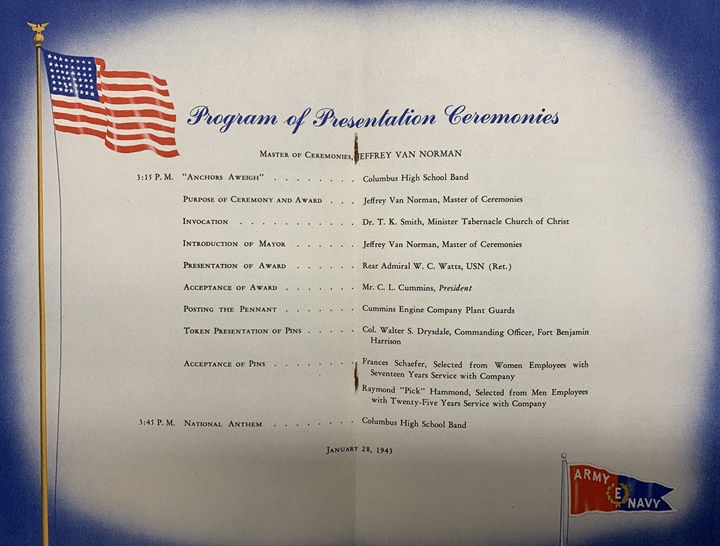
Photo courtesy of Cummins Inc.
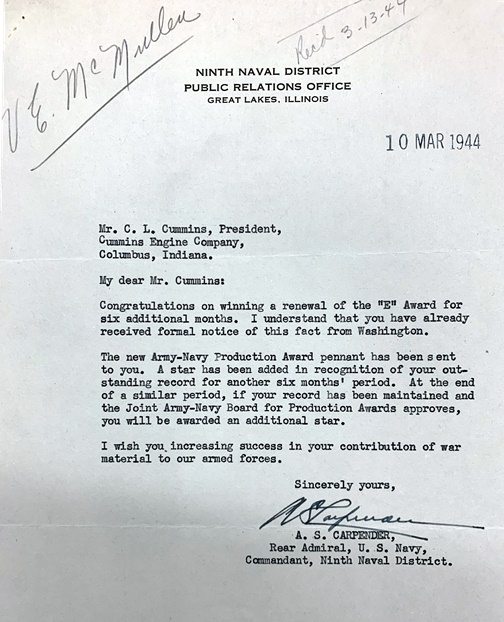
Photo courtesy of Cummins Inc.
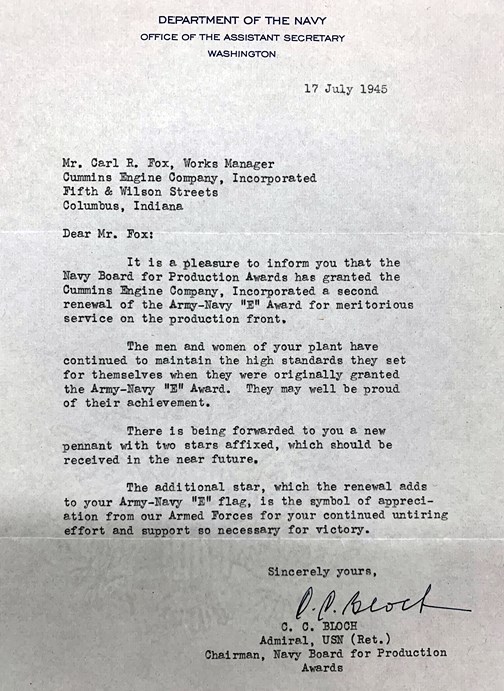
Photo courtesy of Cummins Inc.
Cummins Engine Company World War Two Products: Diesel
engines for naval ships' electrical service generators, HB600 diesel
engines for a 4,346 heavy duty trucks, and diesel engines
stationary land-based generators.
Author's Note: I have had wanted to
add a Cummins WWII page for several years. Cummins is an
Indiana company that participated in the war effort. As evidence,
the company won the Army-Navy "E" award three times during the war.
However, I was unable to find any information on its diesel engine types or applications produced for the military. I visited the Columbus
IN Library and researched its local
history section. I read "The Engine that Could: Seventy-Five Years
of Values-Driven Change at Cummins Engine Company" by Jeffrey L.
Cruikshank and David B. Sicilia. I searched the web and a web-based
library search function. Nothing was found.
Then in early March 2018, as part of an
impromptu "cabin fever" trip, I revisited the Atterbury-Bakalar Air
Museum at the Columbus, IN airport. I had not been there in
several years; and wanted to see if it had any information on Cummins
Engine in WWII. To my surprise, the Cummins engine shown below was newly
on display. It is a six-cylinder Cummins diesel engine attached
to a Burke Electric 120V DC generator. It was built in 1944 for supplying
ship's electrical service.
More information was provided in June 2018,
when Mr. Tommy Harris, a World War Two heavy truck collector in
Virginia, contacted me to let me know that both the Federal 604 and Reo
28-XS were produced with Cummins HB600 diesel engines. In the same
time frame, I purchased several World War Two Army Ordnance documents at
the 2018 MVPA National Convention in Louisville, KY. They informed
me that the Cummins HB600 was also used in the White Model 1064.
In April 2019 Ms. Holly Laurel Kissel sent me
some photos and information on a Cummins PE-245-A World War Two power
unit that had been operating on her family's farm for the past 70 years.
The PE-245-A was powered by a Cummins six-cylinder 672 cu. in. HI-6
diesel engine which produced 90 hp at. 1200 rpm. The generator was
produced by Rogers Diesel and Aircraft Corporation. This unit was
purchased by Mike Schrieber during the summer of 2019.
In November 2019, Mr. Dion Anglin, Director
Defense Marketing, Cummins Inc. contacted me. This was in regard
to work he was doing on the company's contribution to the nation's
defense. This produced information on the K-25 engine used in YMS
minesweepers in World War Two.
Slowly, but surely, the pieces are coming
together, regarding Cummins Engine Company's contribution
to winning World War Two.
DDJ 4-12-2019
PE-245-A Power Unit with Cummins HI-6 Update: The power unit
previously owned by Ms. Holly Laurel Kissel was purchased by Mike Schrieber during the summer of 2019 and is
now part of his collection in Winfield, IN. The article from
"Diesel World" magazine gives some great detail on this very rare
Cummins generator set.
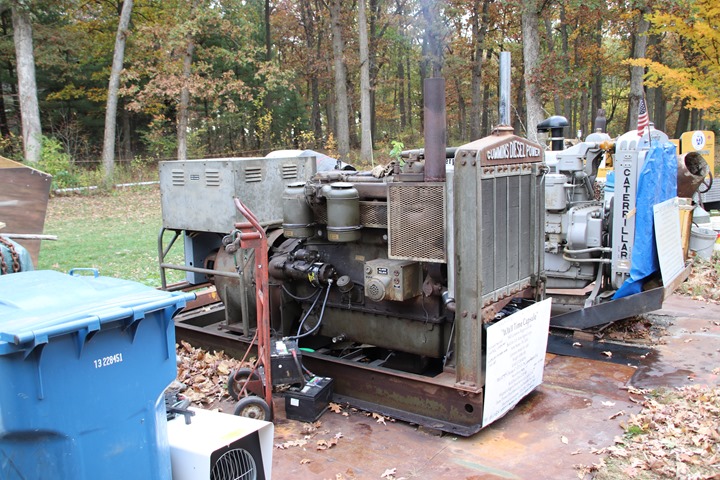
In November I was able to visit Mike and see
his World War Two Cummins Model HI 600 engine start up and run.
Author's photo added 11-3-2020.

Author's photo added 11-3-2020.
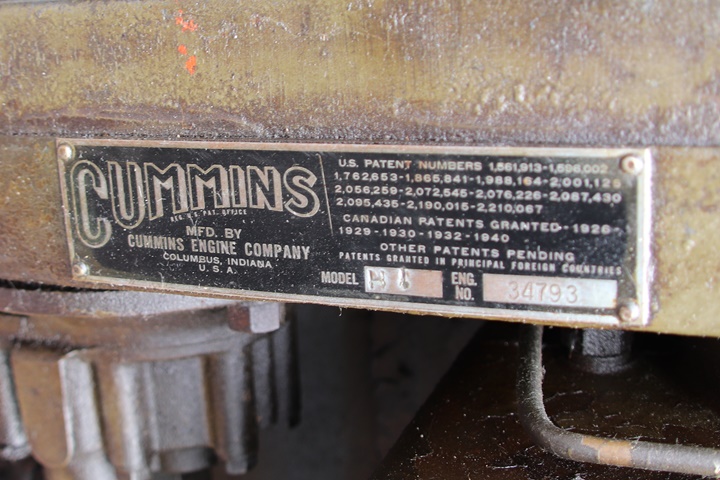
Author's photo added 11-3-2020.
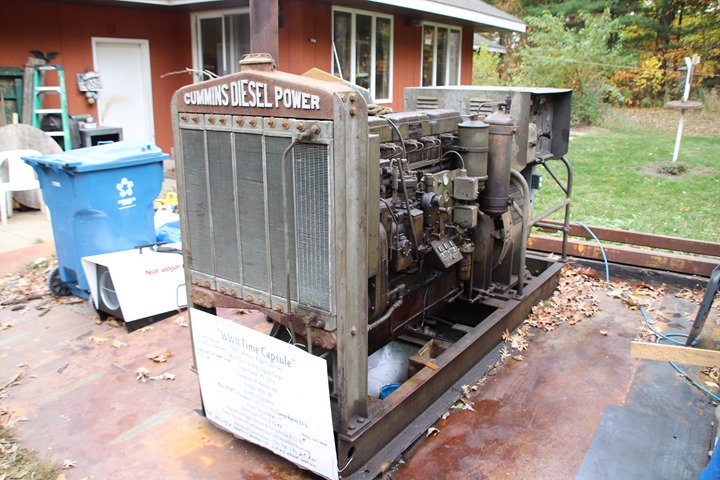
Author's photo added 11-3-2020.
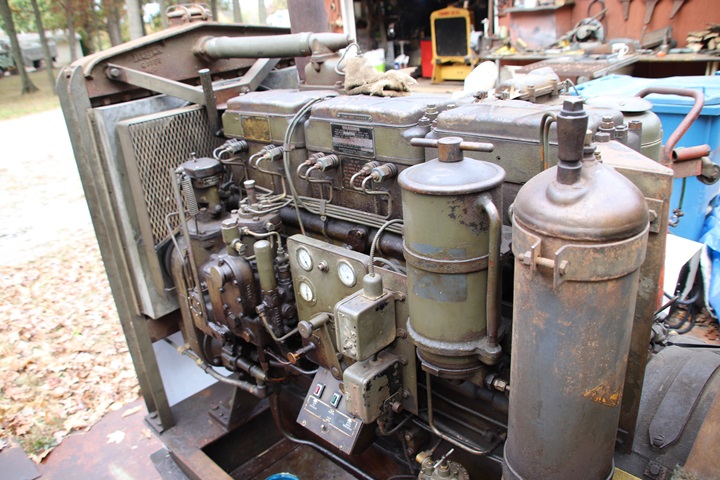
Author's photo added 11-3-2020.
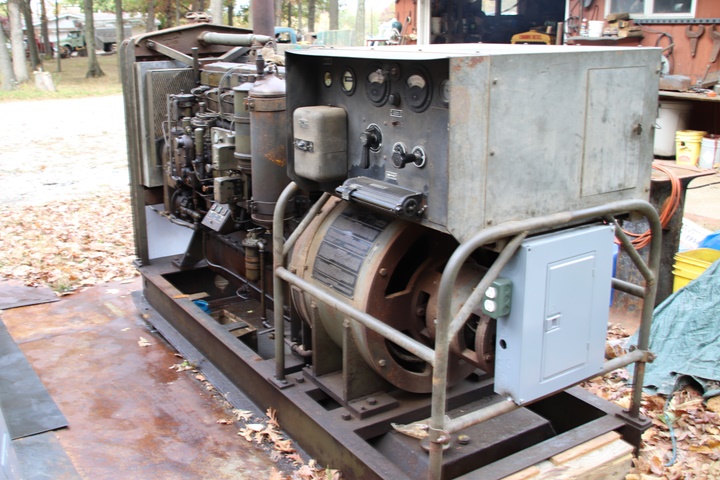
Author's photo added 11-3-2020.
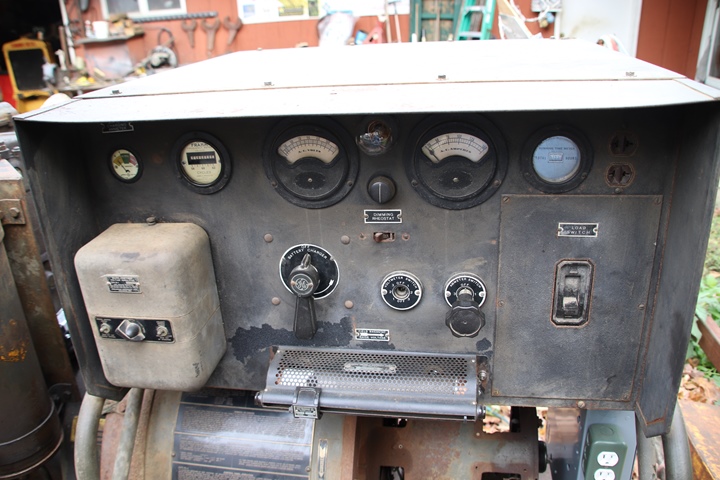
Author's photo added 11-3-2020.
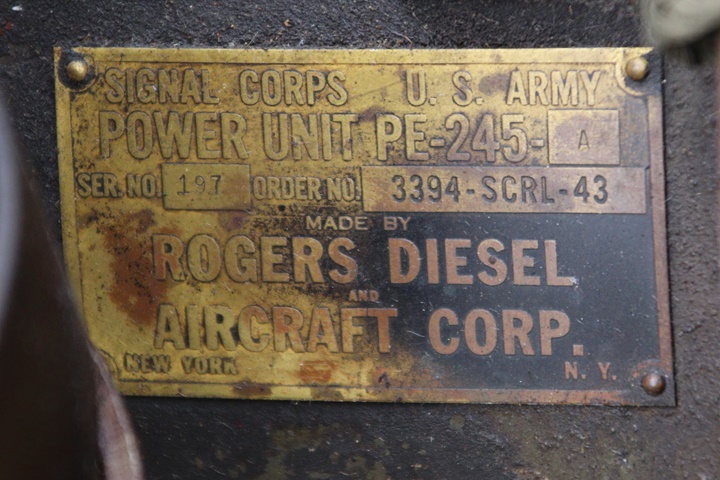
Author's photo added 11-3-2020.
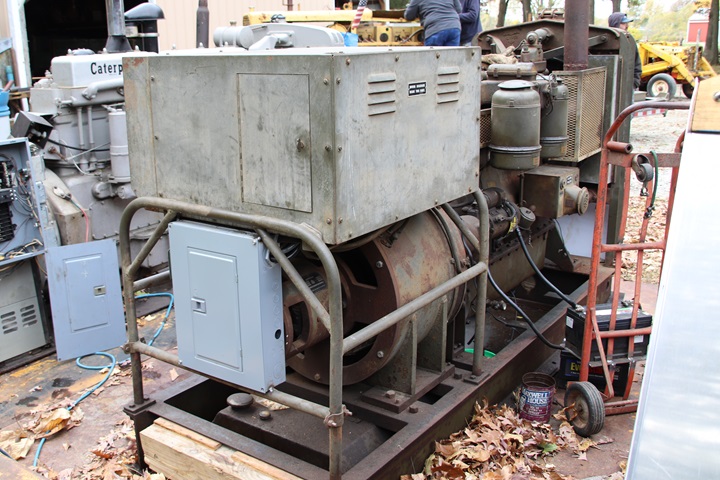
Author's photo added 11-3-2020.
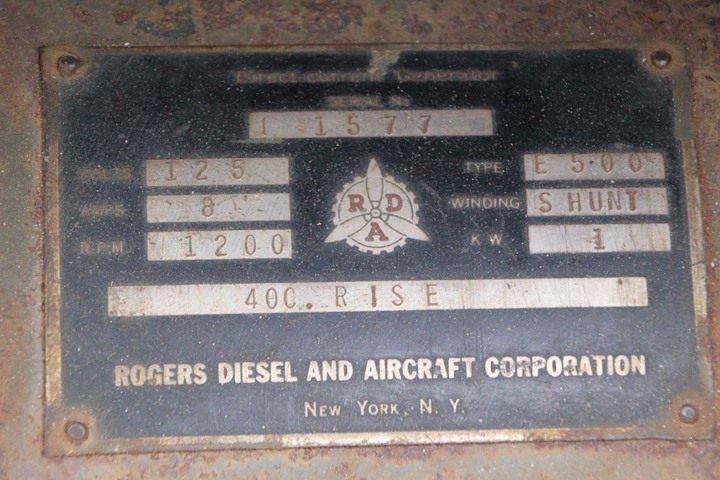
Author's photo added 11-3-2020.
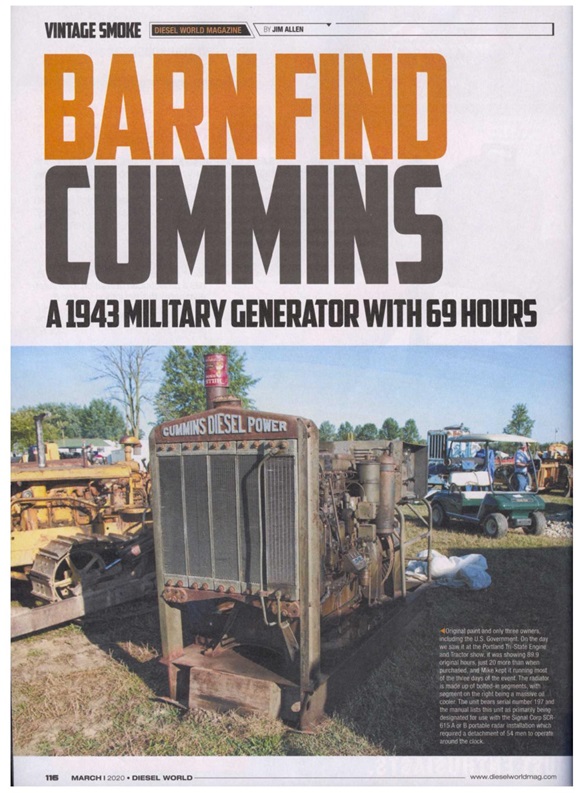
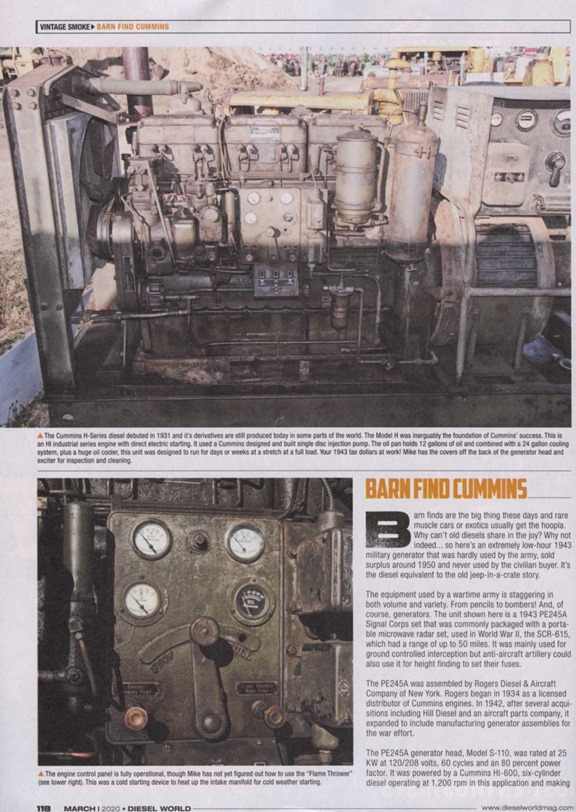
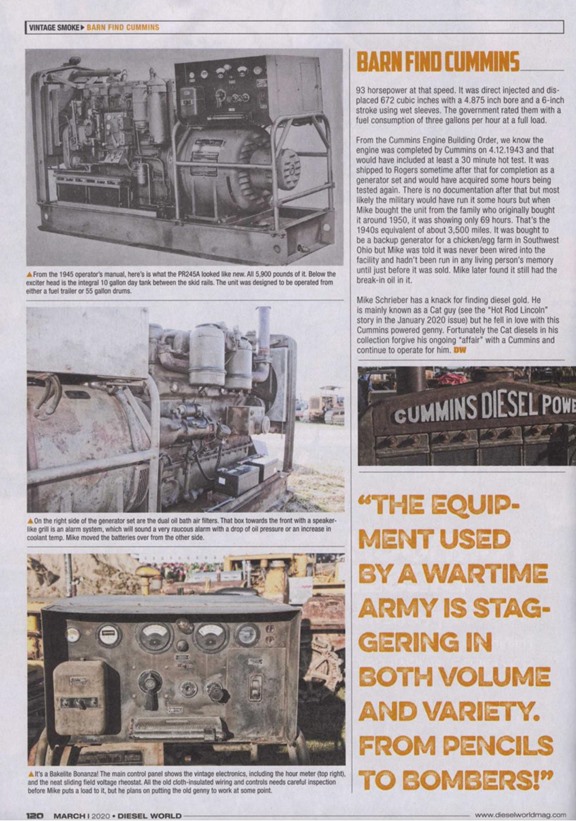
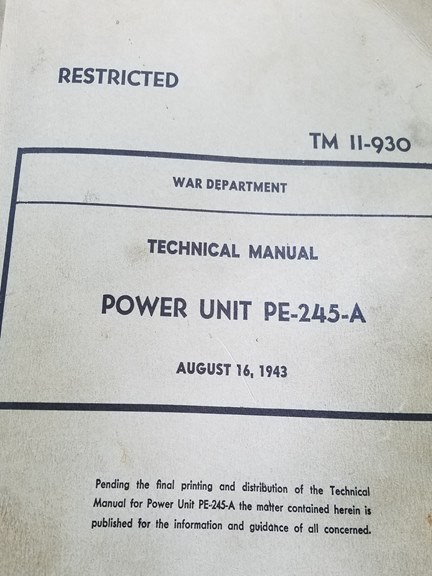
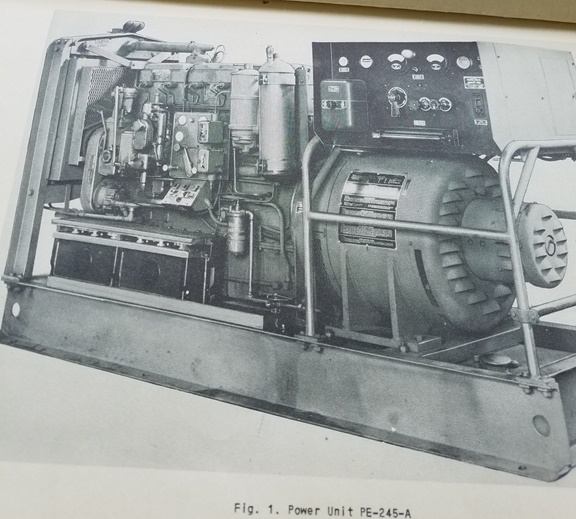
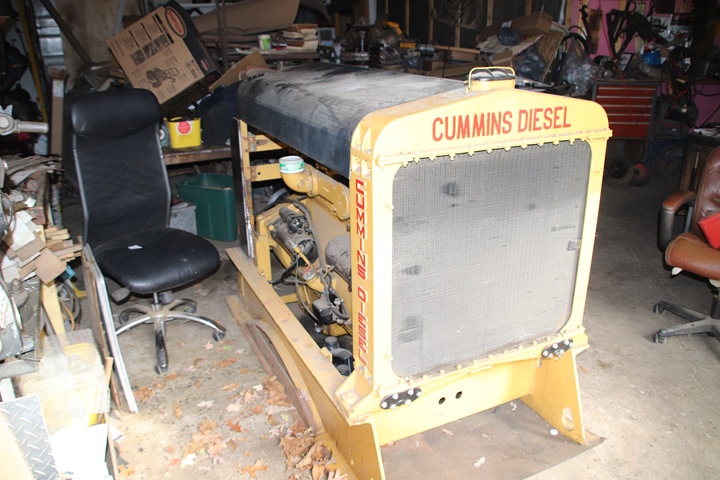
Mike Schrieber also has in this collection
this 1945 Cummins HB150. Author's photo added 11-3-2020.
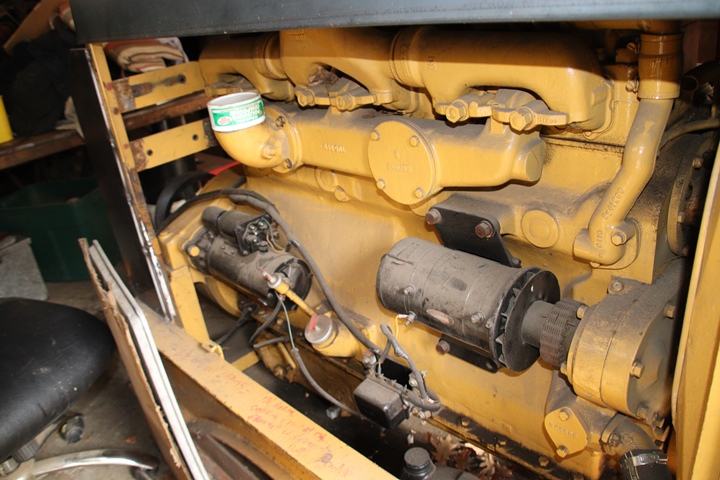
This Cummins engine was not used to power a
generator and has a power takeoff attached to it. The HB150 has a
Delco-Remy DC generator and regulator as part of the engine accessories,
indicating that electrical power was going to be needed for some
application. The Cummins HI 600 in the PE-245 generator set that
Mike owns only has a Delco-Remy cranking motor. Delco-Remy was
located in Anderson, IN and was a supplier of electrical components to
Cummins during World War Two. Author's photo added 11-3-2020.
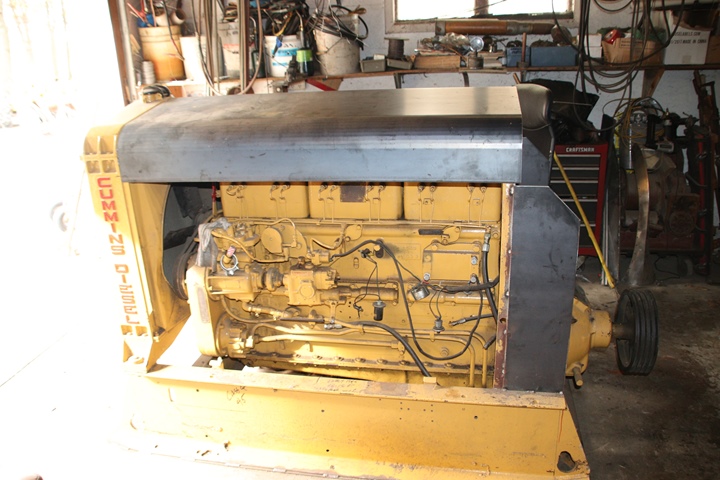
Author's photo added 11-3-2020.
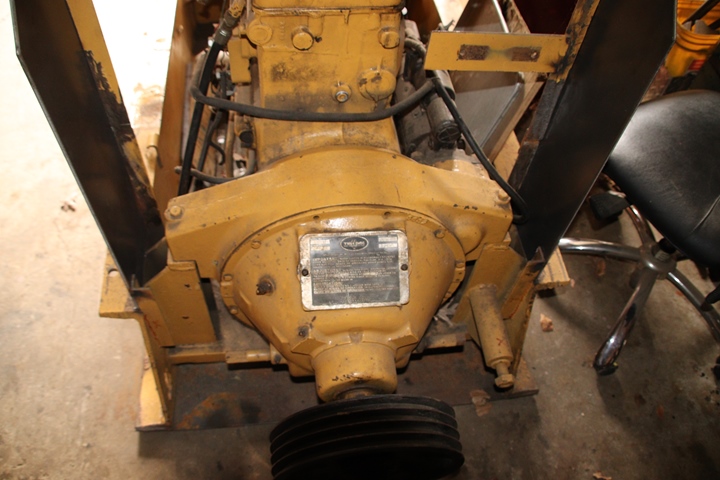
This shows the power takeoff. It is
unknown what it was going to power. Author's photo added
11-3-2020.
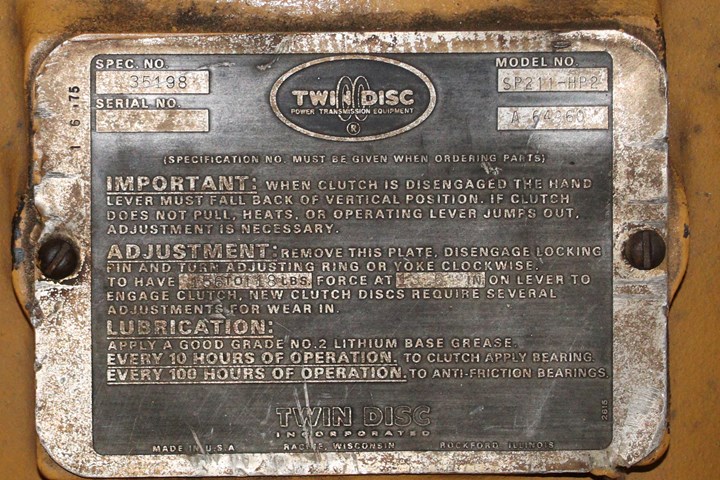
Author's photo added 11-3-2020.
Model A Diesel Engine:
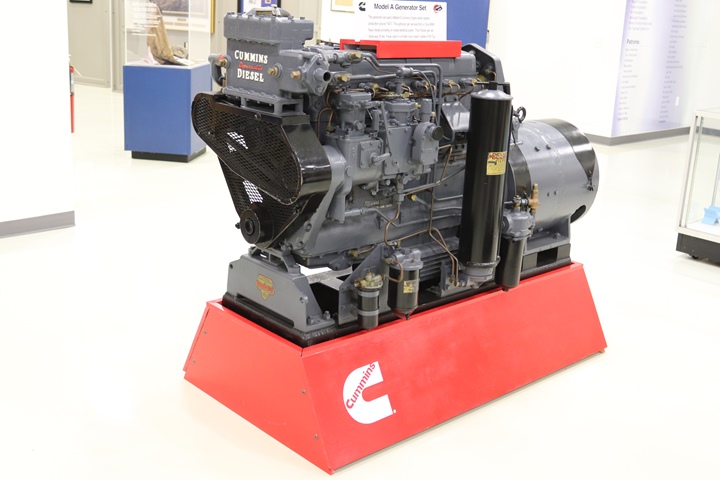
This engine is the only known World War Two
Cummins Diesel to be on display in a museum. It can be seen at the Atterbury-Bakalar
Air Museum at the Columbus, IN airport where it is one of many fine
items on display. The engine is now on permanent loan to the
museum from Cummins after sitting in a storage area at the company for
many years. Author's photo.
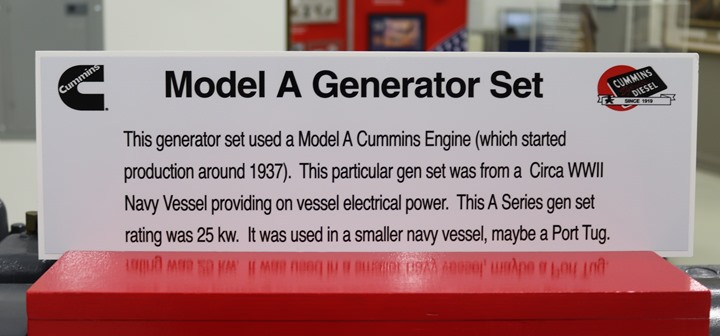
The information label is not specific on the
actual application of the generator set. The museum is correct
about its use in small vessels, as larger ships primarily used engines
from both the Detroit Diesel and Cleveland Diesel Divisions of GM during
WWII. Author's photo.
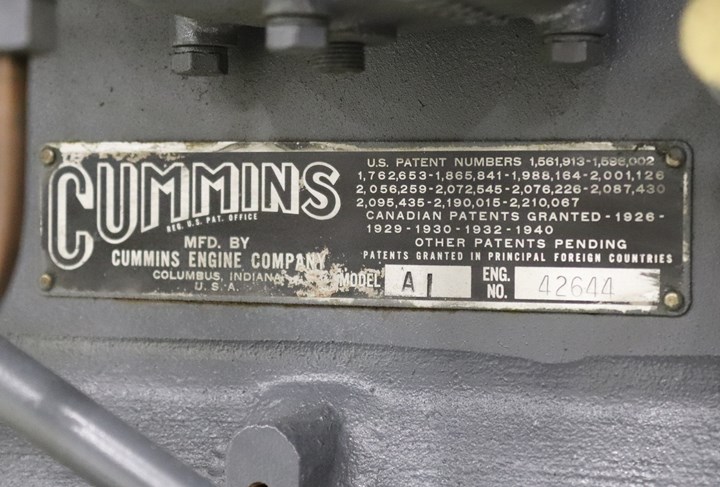
The A series was started in 1937. By
1944 42,644 units had been produced. Author's photo.
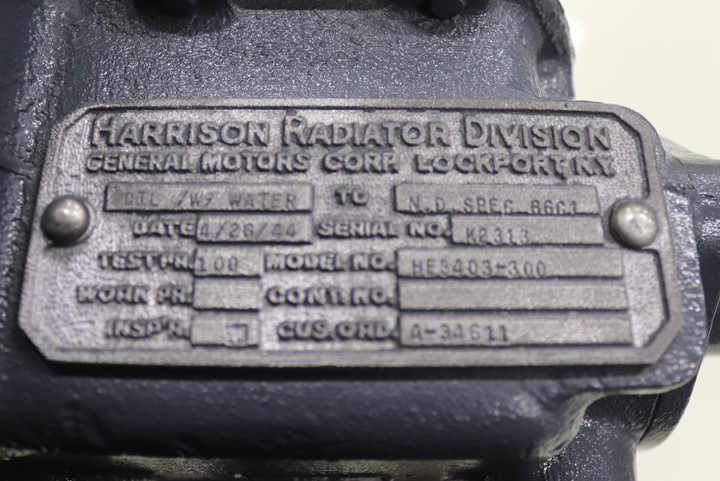
The Harrison-Radiator Division of General
Motor heat exchanger was built on 4-26-1944; indicating this engine was
built sometime after that. Author's photo.
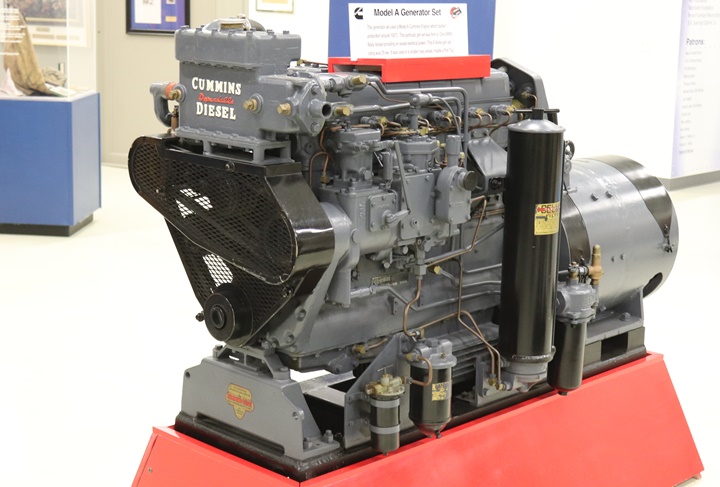
The heat exchanger has "Cummins
Dependable Diesel" cast into the front of it. Author's photo.
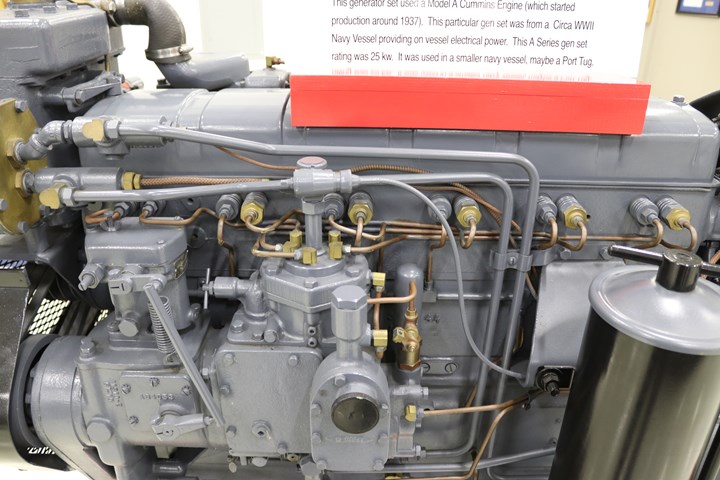
The Cummins A series was a six cylinder
engine. Each cylinder has two fuel lines running to it. The
ones on the right are the high pressure input lines and the ones on the
left are fuel return lines. Author's photo.
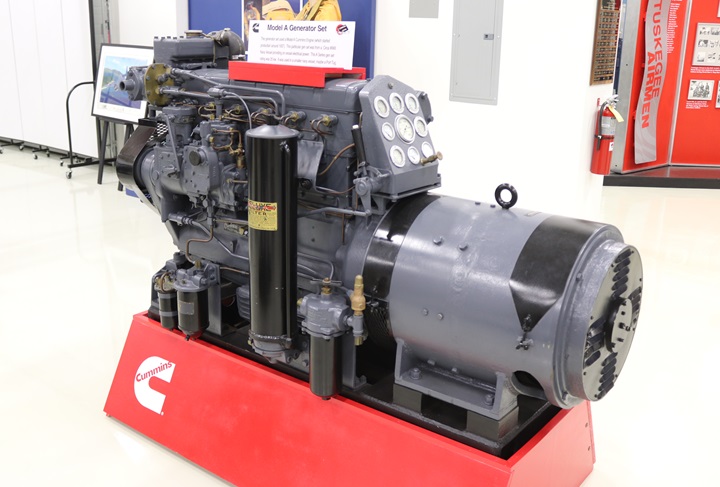
Author's photo.
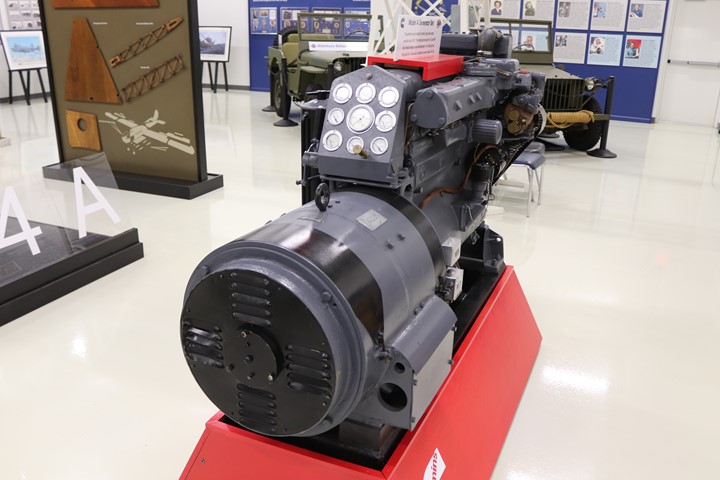
Author's photo.
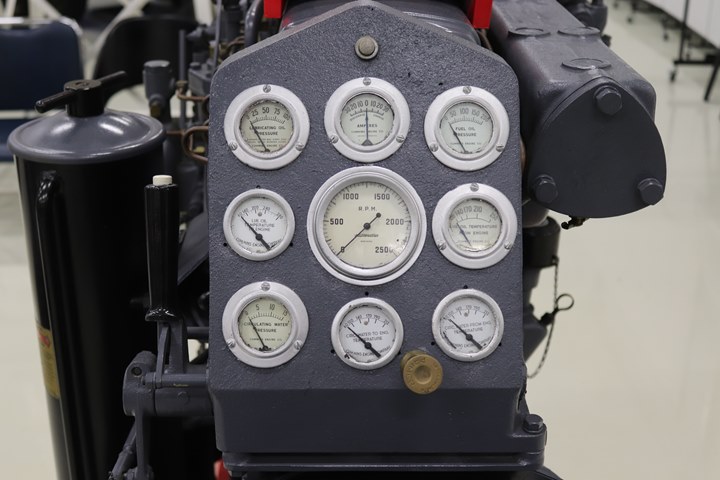
Author's photo.
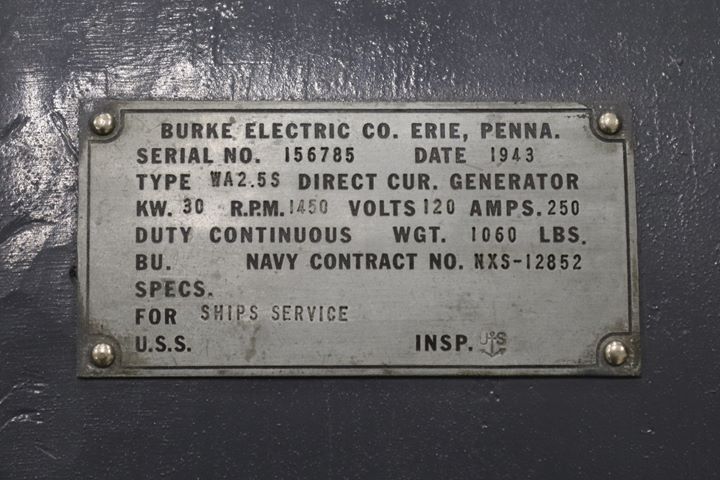
Author's photo.
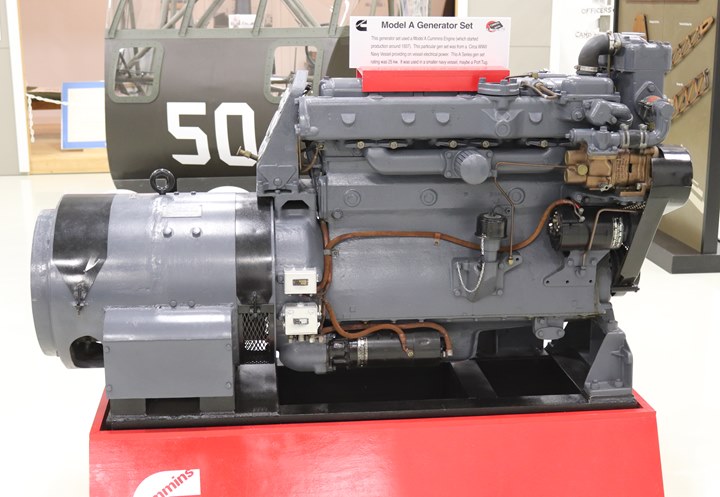
Author's photo.
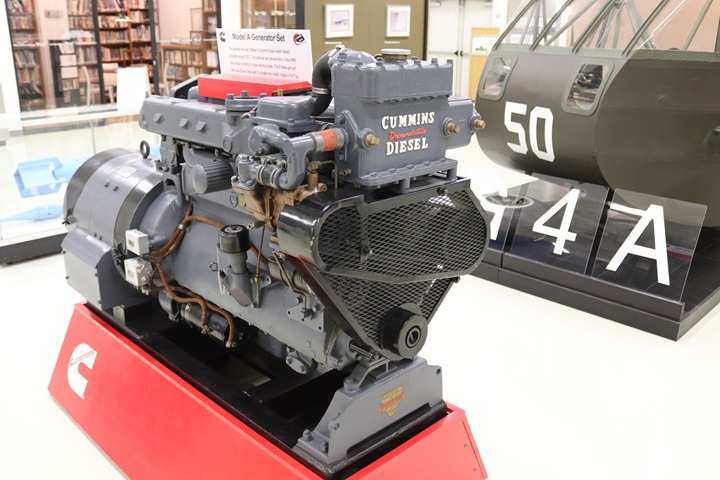
Author's photo.
Model K Diesel Engine:
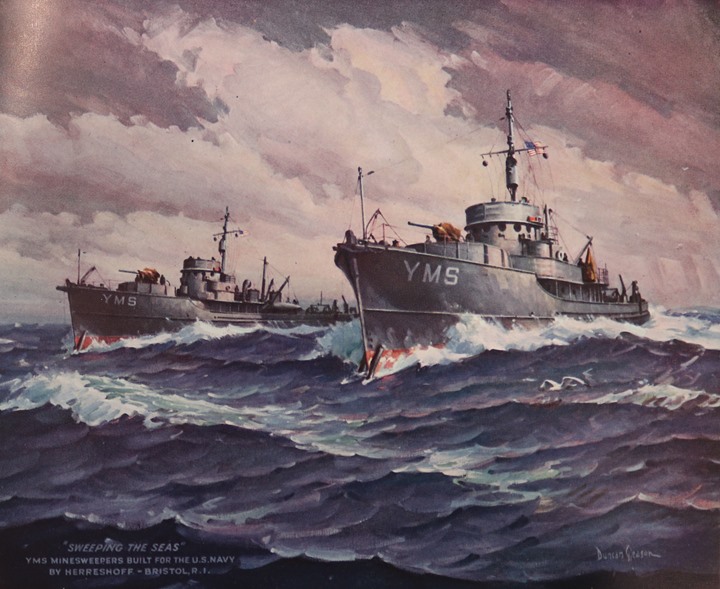
There were 561 YMS minesweepers built by 35 small ship builders in
the United States during World War Two. Two Cummins Model K
engines of 75 hp each were standard equipment on these boats. Each
Cummins engine drove an electric generator which produced magnetic
pulses down two long buoyant electric cables pulled behind the ship.
These were known as LL sweeps and were first introduced by the British
in 1940. The magnetic pulses simulated a steel ship which would
then set off any magnetic-triggered mines that the LL sweep encountered.
As the war progressed and the magnetic mines became more complicated,
the LL sweep continued to be the best method for dealing with them.
After the United States entered World War Two, the U.S. Navy also used
the LL sweep technology. YMS stood for Yard
Minesweeper. It was 135 feet long of wood construction. Being of
shallow draft, they were used around the world to clear landing beaches
of any mines. Thirteen were sunk by mines and three by enemy
shelling during the war. Of the 21 YMS minesweepers with the U.S. Navy at Normandy,
three were sunk by mines. This was dangerous work for the small
wooden boats. The Cummins Model K engine generator-set was part of
an important weapon on the YMS to detect and sink mines.
The water color above showing two YMS class minesweepers on patrol comes
from "100 Fighting Ships." This was published by Herreshoff of
Bristol, RI at the end of the war to commemorate the ships it had built
to help win the war. The photo above represents the two YMSs the
company built.
Cummins HB600
World War Two Truck applications: (This section added
8-11-2018.) Cummins Diesel built 4,443 HB600 engines for
three different medium/heavy-duty trucks shown below.
The six-cylinder, 672 cu. in. engine produced
150 bhp. An interesting aspect of this engine is that it relied on
a "flame-thrower" in sub-freezing temperatures to pre-heat the intake
air. This was accomplished by forcing air through an atomizer
nozzle and across a continuous spark plug into the air stream.
|
Cummins
HB600 Production for
White 10-ton 6x4 Cargo Trucks, and Reo and Federal 20-ton
6x4 Tractors
The production numbers below are for the trucks that
utilized the Cummins HG600 engine. Cummins, being the
only supplier for the engines for these vehicles, would have
had similar schedules to meet the demand for the trucks.
Not included in the numbers below are spare engines and
parts.
The monthly production
acceptances for the trucks noted below comes from "Summary Report of
Acceptances, Tank-Automotive Material, 1940-1945"
published by Army Services Forces, Office, Chief of
Ordnance-Detroit, Production Division, Requirements and
Progress Branch
January 21, 1946 and "Engineering of Transport Vehicles,
published by the Chief or Ordnance - Detroit. |
|
Truck Model |
1940 |
1941 |
1942 |
1943 |
1944 |
1945 |
Total |
| White Model 1064
10-ton 6x4 Cargo |
|
|
506 |
946 |
579 |
469 |
2,500 |
| Reo Model
28-XS 20-ton 6x4 Tractor |
|
|
700 |
|
|
|
700 |
|
Federal Model 604 20-ton 6x4
Tractor |
|
|
843 |
130 |
480 |
|
1,443 |
| Total Cummins
H600 diesel engines built for trucks in
World War Two |
|
|
2,049 |
1,076 |
1,059 |
469 |
4,643 |
The Sterling HWS160H 6x4 truck was
powered by a Cummins engine during World War Two.
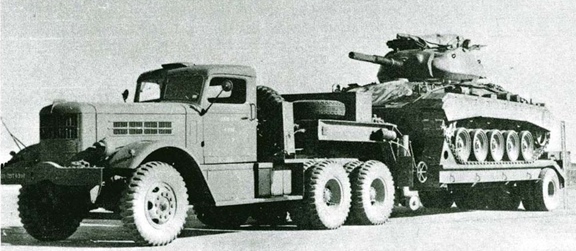
1,443 Federal Model 604 trucks were
produced with the Cummins HB600 engine. Here it is pulling a
trailer with a 20-ton M24 light tank. Photo added 8-11-2018.
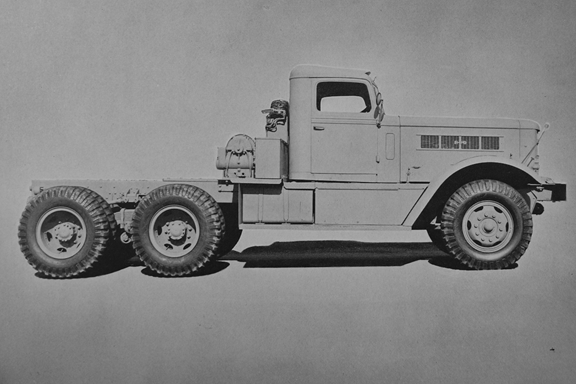
Reo built 700 28-XS 20-ton
tractors powered by the Cummins HB600 diesel engine.
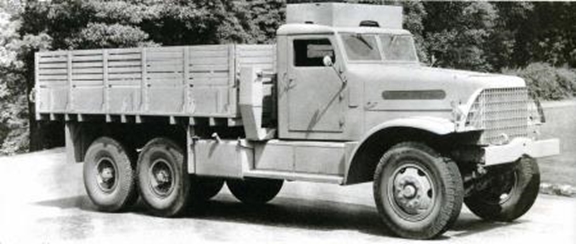
2,500 White 10-ton 6x4 cargo trucks were
powered by the Cummins HB600. Photo added 8-11-2018.
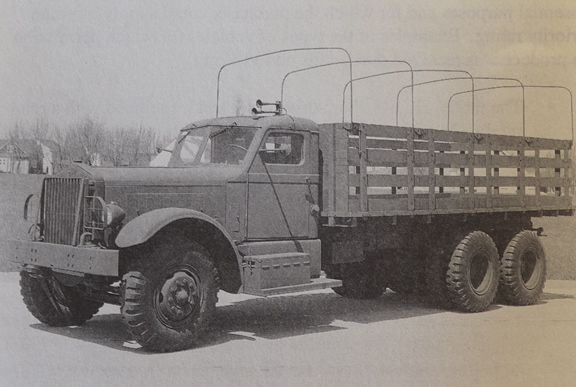
The Sterling HWS160H 6x4 was powered by a
Cummins Diesel HB engine and utilized by the Army Corps of Engineers.
Cummins H-6 Generator Sets:
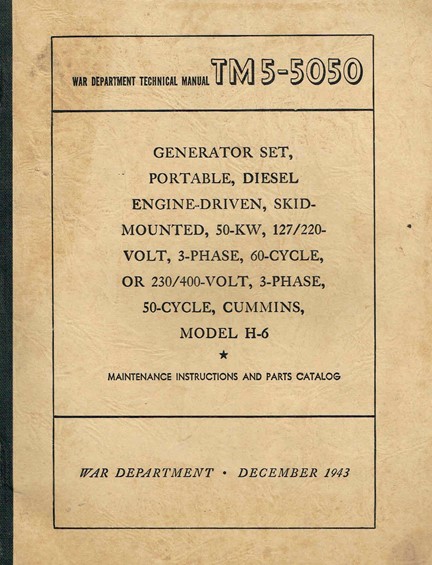
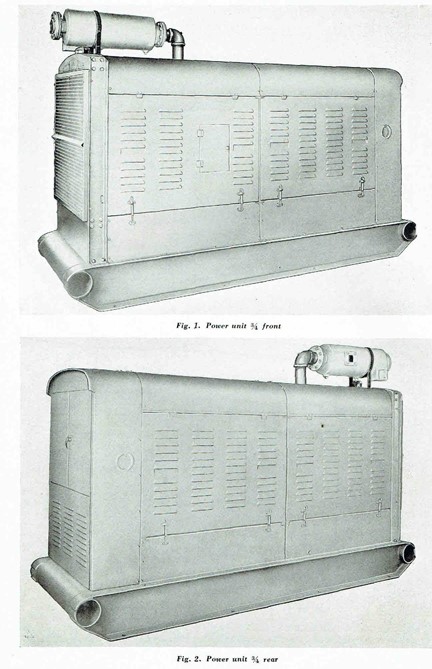
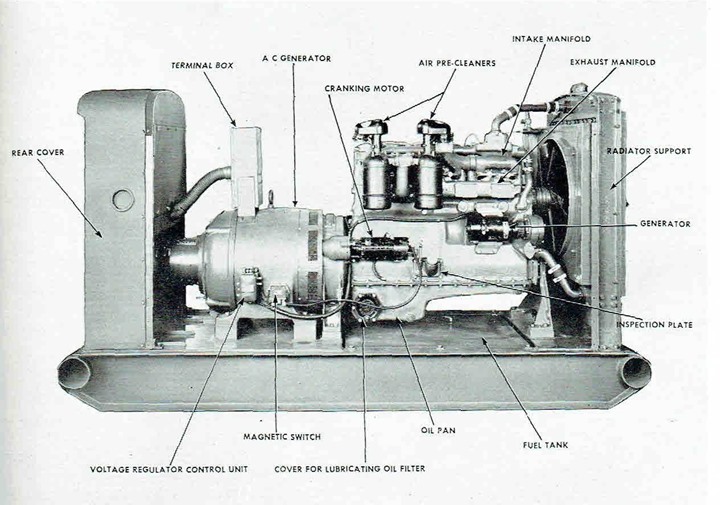
Post-World War Two Military Products:
Below are several military products that are powered by Cummins Diesel
engines.
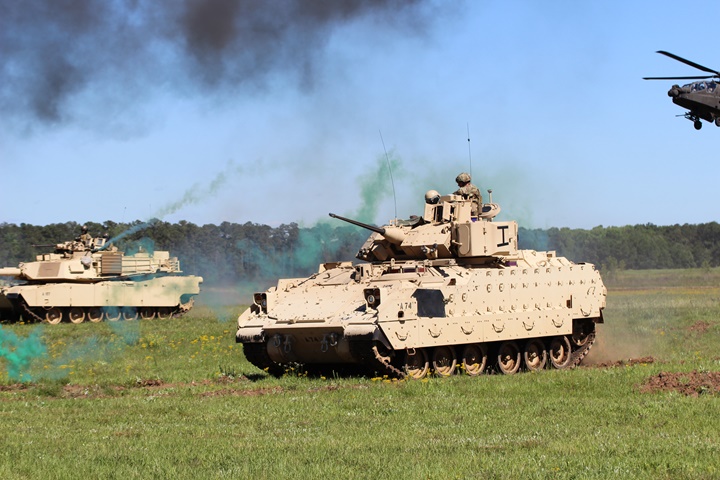
The M2 Bradley Fighting Vehicles get around
the battlefield in a big hurry, powered by several versions of the
Cummins 903-T series engines. Author's photo added 11-4-2019.
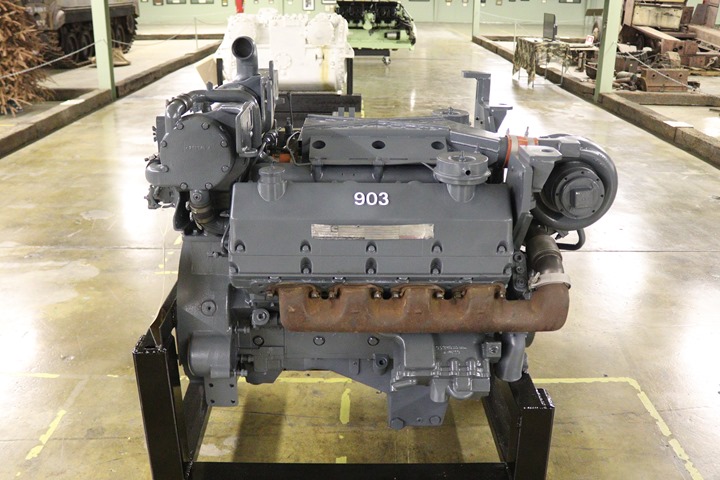
This Cummins 903-T was built 1978 and is a
pre-Bradley example of the engine. In 1981 Cummins began
delivering 903-T 500 engines for installation in the M2 Bradley.
This 903-T is on display at the AAF Tank Museum in Danville, VA.
Author's photo added 11-4-2019.
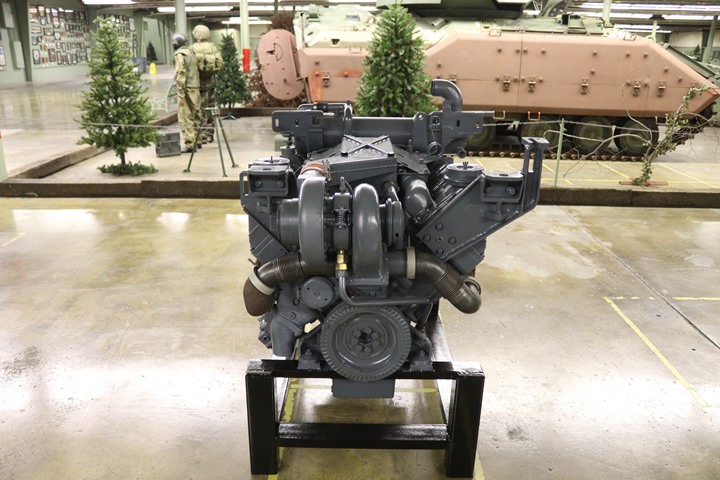
Note the M2 Bradley in the background.
Author's photo added 11-4-2019.
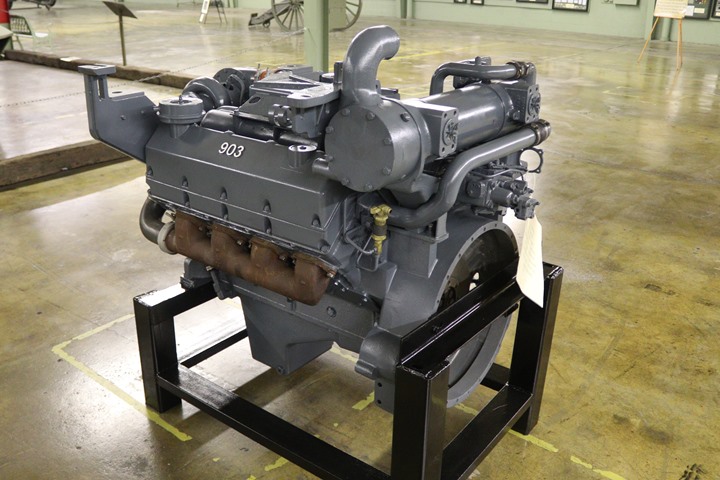
Author's photo added 11-4-2019.
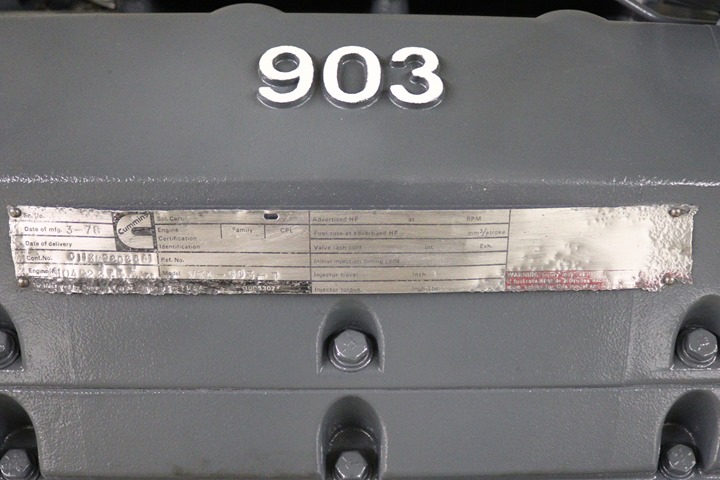
Author's photo added 11-4-2019.
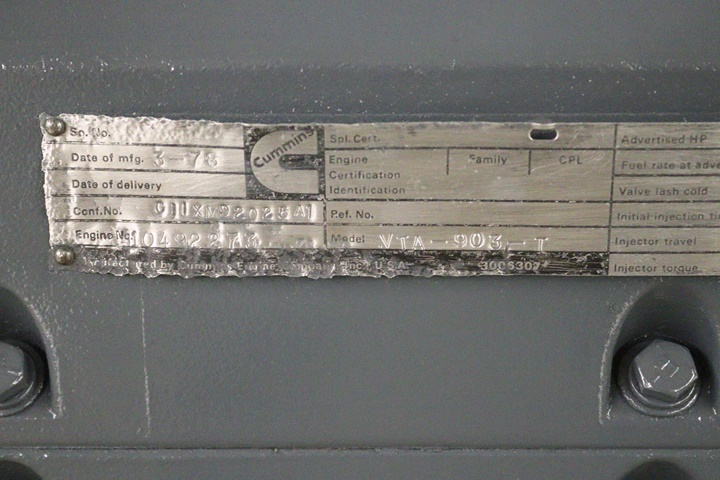
Author's photo added 11-4-2019.
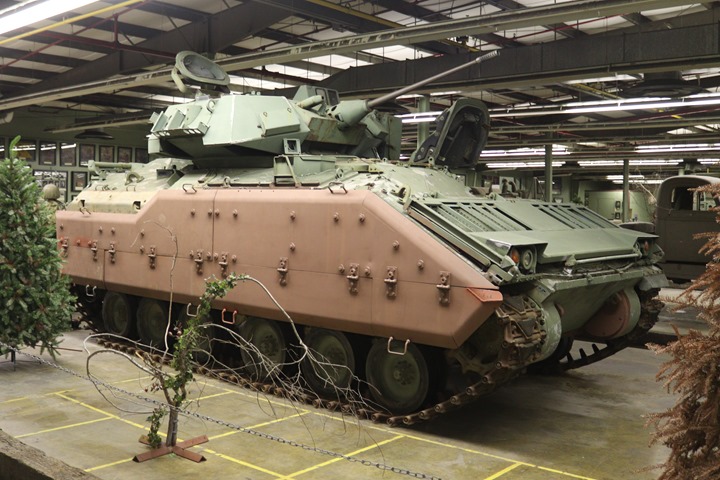
Author's photo added 11-4-2019.
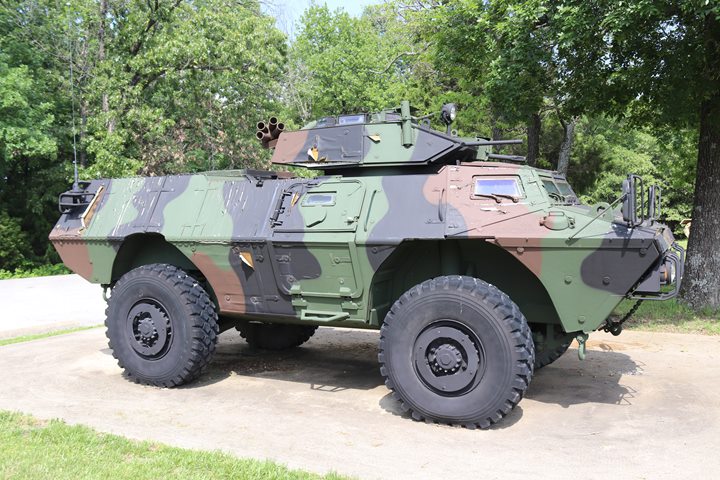
Over 2,000 M1117 "Guardians" were
produced, powered by Cummins
6CTA8.3 260 hp engines. The M1117 is used by MP units for various
security and road convoy escort duties. This M1117 is on display
inside the main gate at Fort Leonard Wood, MO. Author's photo
added 8-11-2018.
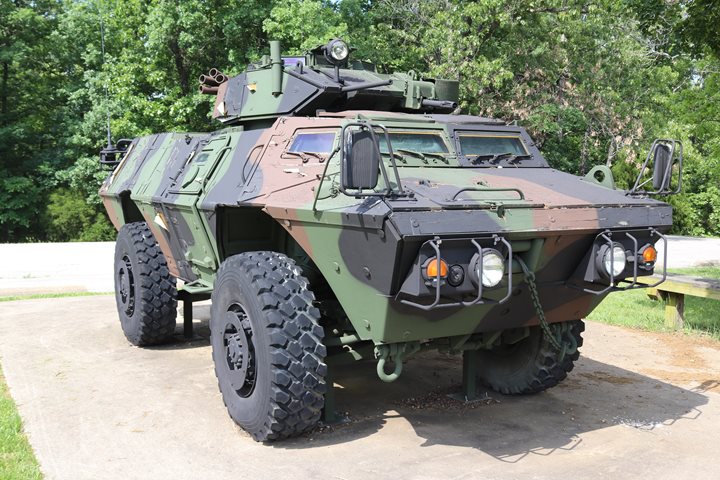
Author's photo added 8-11-2018.
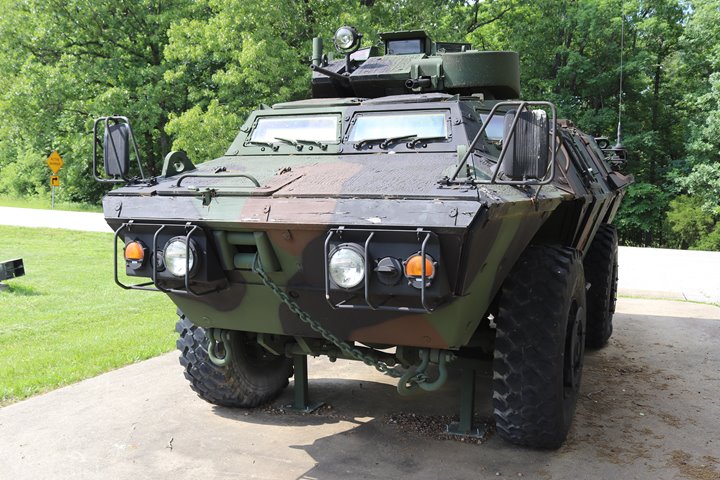
Author's photo added 8-11-2018.
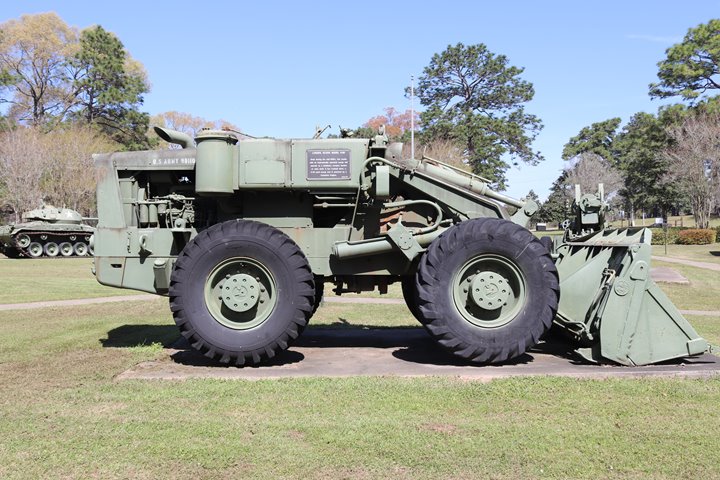
This Hough front-end loader is on display at
Fort Polk, LA. It is powered by a Cummins diesel engine. Author's
photo added 8-11-2018.
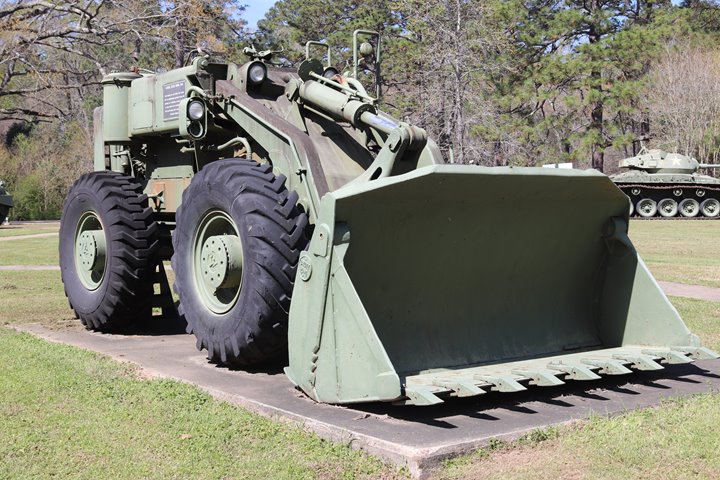
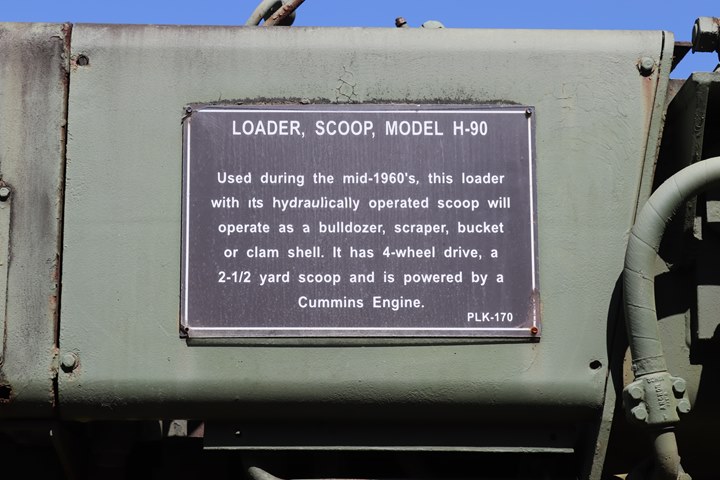
Author's photo added 8-11-2018.
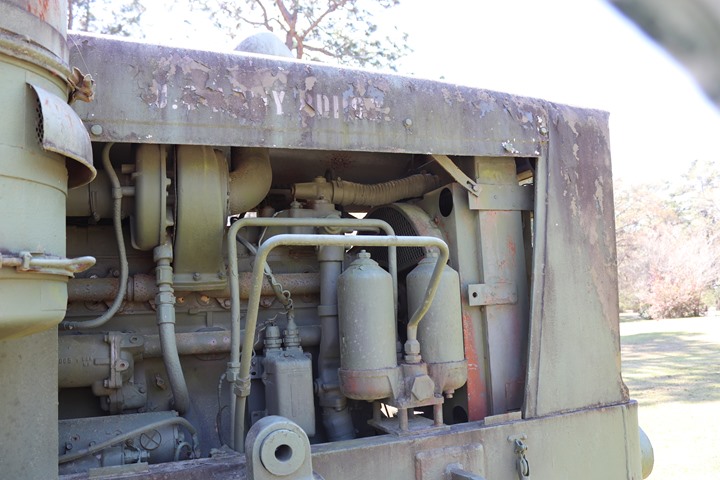
Author's photo added 8-11-2018.

Author's photo added 8-11-2018.
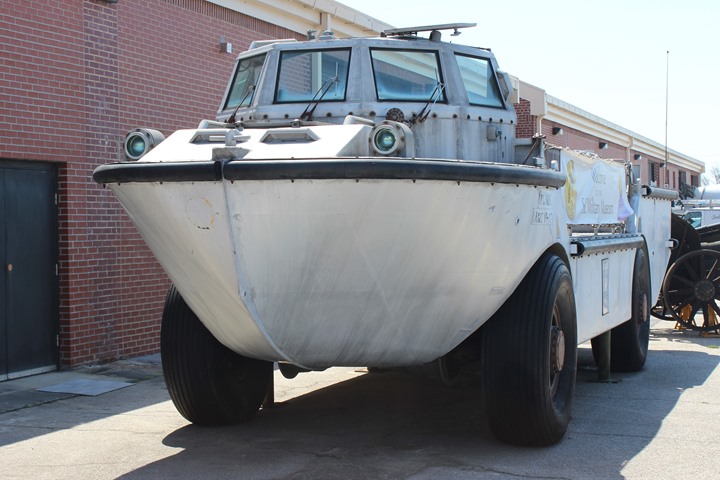
The LARC-V (Lighter, Amphibious, Re-supply,
Cargo - Five Ton) was a post-World War Two vehicle operated by the US
Army. All 968 LARC-Vs were powered by Cummins V8-300 engines of
785 cu in, producing 300 hp. This LARK-V is on display at
the South Carolina Military Museum in Columbia, SC. Author's photo
added 8-11-2018.
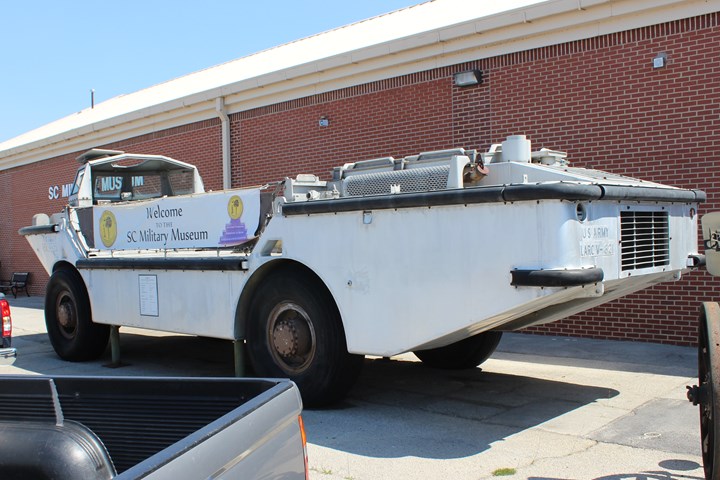
Author's photo added 8-11-2018.
|






























































